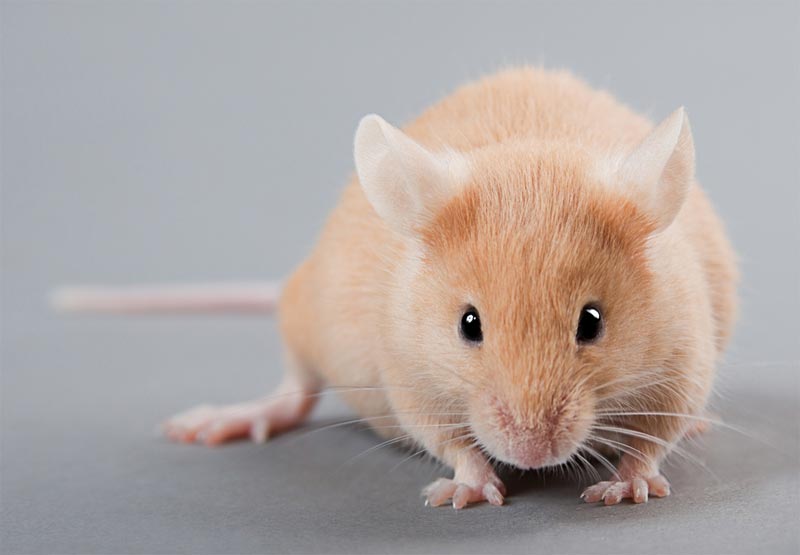Warm, Comfy Mice Make Better Lab Specimens

Scientists hope to make mice comfier in their lab homes, not just to boost the rodents' well-being but also to make them more humanlike and better models for drug studies.
The problem, they say, is that mice kept in labs for medical studies are typically cold, and the resulting stress can change the physiology of the animal. The result may be one reason why nine out of 10 drugs that seem to work in lab mice and other animal models ultimately fail to work in humans, the researchers add.
"If you want to design a drug that will help a patient in the hospital, you cannot reasonably do that in animals that are cold-stressed and are compensating with an elevated metabolic rate," Joseph Garner, associate professor of comparative medicine at Stanford University School of Medicine, said in a statement. "This will change all aspects of their physiology, such as how fast the liver breaks down a drug, which can't help but increase the chance that a drug will behave differently in mice and in humans."
The solution may be easy: just provide the mice with nesting materials.
The lab mouse
Hundreds of millions of mice populate the world's laboratories, according to Garner who calls the rodents "one of the most fantastic animals on Earth."
Mice prefer somewhat toasty temperatures, between 86 and 90 degrees Fahrenheit (30 and 32 degrees Celsius), though U.S. research laboratories are often kept at chillier temperatures to abide by federal regulations — around 68-75 F (20-24 C). The cold temperatures can suppress unmanageably aggressive behaviors in mice; also female mice are better at lactating in cooler temperatures.
Sign up for the Live Science daily newsletter now
Get the world’s most fascinating discoveries delivered straight to your inbox.
On the down side, when housed in temperatures of 64-68 F (18-20 C), mice may show changes in their immune systems as well as a slowing of growth. Many labs' current chill factor, as such, is "right at that threshold," Garner pointed out. "That means the mice may be compromised physiologically, potentially affecting research results."
Will they build it?
Garner's team built sets of two cages linked by a small tube so the mice could move between them. The chilled cage, which was kept at 68 F (20 C), held varying quantities of shredded paper for nest building. The other cage was kept at one of six temperatures between 68 F and 95 F (20 C and 35 C), but without any nesting material.
The results varied slightly depending on the strain of mouse and its sex, the team found. None of the mice, however, was content to stay put in the cold; instead they either moved to the toastier locale, if available, or built elaborate domelike nests. And the more shredded paper that was available, the more the mice seemed willing to settle for the cooler clime.
The mice would often spend hours collecting paper shreds from the cold cage and transferring it to the warmer one to build their home. Calling these mice "naughty little rascals," Garner said, "they would go on holiday somewhere [the warmer cage] and take their nest with them." [10 Creative Creatures]
Perhaps these mice are revealing another purpose beyond warmth for such nests, Garner argues. The nests may also provide physical comfort (think a fluffy blanket or pillow) or a form of protection that mellowed any mouse stress.
Some nesting specifics they found: Females preferred warmer temperatures than the males, by about 9 degrees F (5 degrees C). About 0.2 ounces (6 grams) of nesting material was sufficient to keep mice content, though sometimes they could use as much as 0.4 ounces (10 g).
Garner and his colleagues detail their study online today (March 30) in the journal PLoS ONE.
Follow LiveScience for the latest in science news and discoveries on Twitter @livescience and on Facebook.
Jeanna Bryner is managing editor of Scientific American. Previously she was editor in chief of Live Science and, prior to that, an editor at Scholastic's Science World magazine. Bryner has an English degree from Salisbury University, a master's degree in biogeochemistry and environmental sciences from the University of Maryland and a graduate science journalism degree from New York University. She has worked as a biologist in Florida, where she monitored wetlands and did field surveys for endangered species, including the gorgeous Florida Scrub Jay. She also received an ocean sciences journalism fellowship from the Woods Hole Oceanographic Institution. She is a firm believer that science is for everyone and that just about everything can be viewed through the lens of science.










